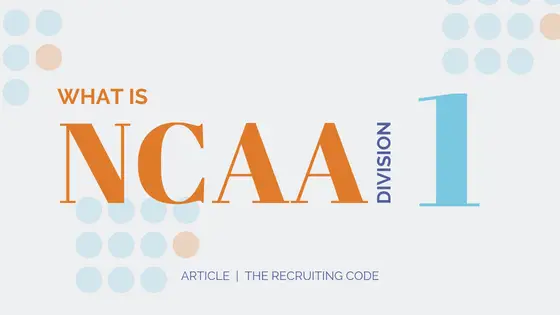NCAA Division I
NCAA Division 1 schools are typically the most noticeable in the public eye. There are really two different levels of Division 1 programs, though they all compete for the same championship (with the exception of football). The highest level of collegiate sport exists mostly within the five big Division 1 conferences; the SEC, ACC, Big 12, PAC 12 and Big 10. These schools represent just under 25% of the Division 1 constituency. The majority of Division 1 flies under the radar like every other classification of institutions. There are many Division I schools you’ve never seen on TV.
Scholarships
Division 1 schools, on average, offer more athletic scholarship money and have more resources than schools from the other divisions or NAIA. While there is more scholarship money, not every athlete receives a full ride scholarship, or any scholarship money at all. There is usually access to strength coaches, and higher paid assistant coaches than any other division.
Competition
When you are on the field you will by and large be competing against the best collegiate athletes in the country. The amount of athletic money available and the prestige associated with Division 1 typically draws the best high school athletes. Division 1 focuses on recruiting the premier athletes. On average, Division 1 teams are better than other divisions, but not always. There are some Division 1 programs that cannot win games against a good Division 2 or 3 school.
Out of Season Requirements
The out of season requirements are typically the most rigorous of any of the divisions. Division 1 rules allow a considerable amount of contact by weeks and time between a coach and athlete. They also have the most freedom to compete in the non-traditional season. During the non-traditional season, you will often see intense weight training and fitness practices in addition to on the field practices. Coaches are able to push players to build muscle and physical fitness during this period. Depending on the school and the program, you might do fitness in the mornings and field sessions in the afternoon. There are games during the non-traditional season, though they don’t count toward any kind of standings. They are labeled ‘dates of competition’ rather than games. On a date of competition, a team may compete with one school or several during the same day. In Division 1 soccer, for example, teams may participate in 5 dates of competition.
Academics
Academics can often be a challenge for athletes at the Division 1 level. The majority of Division 1 athletes do well in the classroom, but it can be a substantial challenge. Many an athlete and coach have noted that sport comes first and academics are secondary. This may sound fun and often is, but you need to remember that for most players athletics will end in four years but your academic preparation will determine the beginning of your career and lifestyle.
Playing Time
The other thing you need to consider is playing time. Of course there are starters and role players who get considerable playing time throughout their career. But for every starter, there are an equal number, and up to twice as many, players on the bench. I talked to a young lady a few years ago who had gone to a mid-level Division 1 school to play soccer. She had been rated the number one goal keeper coming out of her state that year. She had a dozen opportunities and offers, but chose her “dream school” and the reputation of playing Division 1. She spent her freshmen and sophomore years on the bench. Then the coach revoked her scholarship before her junior year, because she was never going to play and he needed to free up money for new players. She could have been successful on many teams outside of Division 1. Unfortunately she aimed too high.
Does this mean not to aim high? Not at all. This is an individual decision. There are a few freshmen that receive playing time right away at Division 1 schools. There are many who earn playing time during their four years. This is no different than at other levels, but athletes who are this talented have a choice. If you make the decision to play at a Division 1 school, use this information to help you decipher what it is you want and what you will be satisfied with.
3 Questions before we go:
What about scholarships? Division 1 can offer athletic scholarships. Check out my post on Scholarship Myths.
Are there tryouts? Division 1: Only men’s basketball is allowed to hold tryouts. All other sports cannot hold tryouts.
The NCAA has an eligibility center for Divisions 1 and 2. You can access it by going to the NCAA Eligibility Center.
Is there an eligibility center? The eligibility center was formerly known as the NCAA Clearinghouse.
There is no registration deadline for the eligibility center. You must have it completed before you participate in college athletics. The purpose is to certify that you are academically eligible coming out of high school.
For Division 1 you must have a 2.3 core GPA, the appropriate test scores and the correct core courses in high school. Why didn’t I just include the ACT or SAT scores you need? Well, the NCAA rarely makes things so simple. Division 1 has a sliding scale in which the higher your GPA, the lower your test scores can be and vice versa.
This scale is set to be revised beginning in 2016. You can see both the current and revised scales at NCAA Eligibility Center.
For more information to help you along toward playing NCAA Division 1, check out the following three articles:
How can you figure out what level you can play in college?


